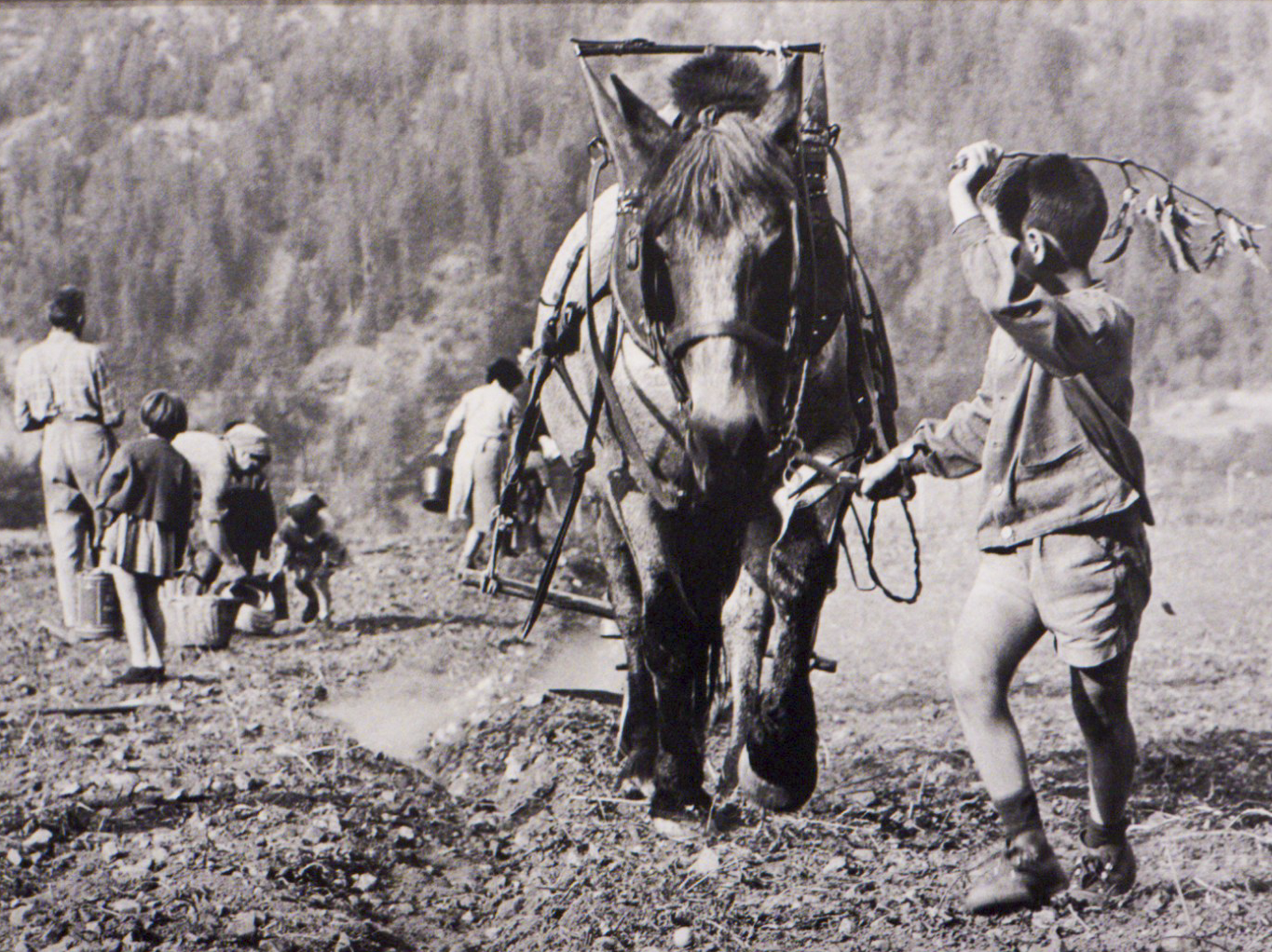Bormio 1962

Photo by Pepi Merisio
Photographic Reading
Detailed Image Analysis: The photograph depicts a rural scene with multiple subjects engaged in agricultural labor. A horse, central to the image, is harnessed to a plow, indicating the cultivation of the land. A young boy is guiding the horse, and his stance suggests effort and concentration. The attire of the subjects is indicative of a time period when mechanized farming was perhaps not prevalent. In the background, there are figures that appear to be performing tasks related to farming, such as carrying buckets and tilling the land. The photograph is monochromatic, emphasizing textures and shadows.
Interpretation of the Message: The image seems to convey a narrative about rural life, the relationship between humans and animals in traditional farming, and possibly the involvement of the entire family, including children, in daily labor. The presence of the child as a central figure might be suggesting themes of responsibility, hard work, and the passing down of knowledge and skills across generations.
Technical Choices:
Light: The lighting appears to be natural and diffused, with shadows indicating that the light source is above and slightly to the left. The light highlights the subjects’ forms, creating a sense of depth and volume.
Image Planes: There are three distinct planes. The foreground features the horse and child, sharply in focus. The middle ground includes the figures with buckets. The background, less distinct, shows a tree line and a hill, providing context and depth.
Tones: The tonal range is broad, with deep blacks and bright whites contributing to a dynamic contrast. Mid-tones are present but less dominant, adding to the image’s overall depth.
Framing: The framing is horizontal, allowing for a narrative that extends across the image. The horse and child are offset, not centered, which may lead the eye through the scene from left to right, following the action.
Point of View: The photo is taken from a slightly lower point of view, possibly at eye level with the child, which creates a sense of immediacy and involvement with the subjects.
Subjects: The primary subject is the boy with the horse, as they are centrally located and sharply in focus. The secondary subjects are the figures in the background, adding context to the primary subjects’ actions.
Compositional Structure: The composition seems balanced, with the horse and child anchoring the image. There is a sense of symmetry provided by the trees and the people in the background. The plow lines create leading lines that draw the eye into the depth of the scene.
Dynamism: There is an implied movement from the position of the horse and the boy, suggesting the action of plowing. However, the overall scene is still, capturing a moment in time, which might reflect on the timeless nature of agricultural life.
